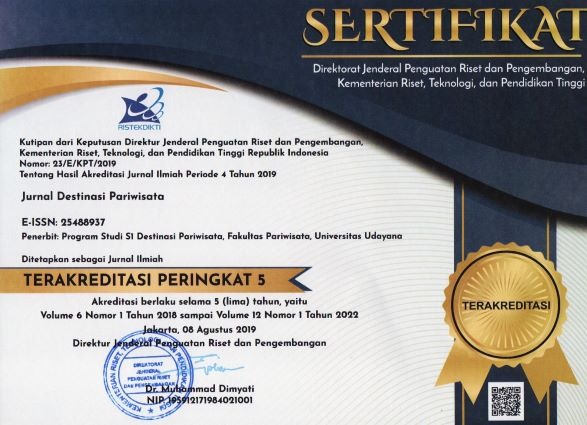Pengelolaan Gua Cerme Sebagai Daya Tarik Wisata Berkelanjutan
Abstract
Cerme Cave is one of the objects of special interest tourist attraction which is used as one of the non-coastal tourism development projects by the dinas pariwisata kabupaten Bantul. This is done so that the distribution of tourists who visit, can be distributed evenly across all attractions in the Bantul regency. The decline in the level of tourist visits, limited attractions, and double levies has become an obstacle to the development of the Cerme Cave attraction, so a number of recommendations are needed to overcome and make these attractions sustainable. The research model used is qualitative through exploratory studies. The results showed that the problems that arose in these attractions include, dualism of management, the number of tourists being a priority, community participation is still low, lack of knowledge about tourism management in accordance with sustainable tourism management guidelines, do not have the intended target market, and marketing and limited promotions. Special interest tourism management strategies, including the targeted tourism segments must be clear, adequate human resource readiness in quality and quantity, facility development and accessibility in accordance with the landscape and tourist needs, promotions in accordance with the theme of tourist attraction attractions, so that the development strategy of Cerme Cave can be implemented optimally.
Keywords: sustainable tourism, cerme cave, management.
Downloads









